
A very unique festival takes place in Punakha before spring every year. It happens during the 6th day of the 1st month of the Bhutanese lunar calendar. This festival is performed at the Pungthang Dewachen Phodrang, also known as Punakha Dzong. This is a fascinating 3-day ceremony preceding the Punakha tsechu. It is where an ancient battle is reenacted by a group of warriors clad in red, known as PAZAPS.
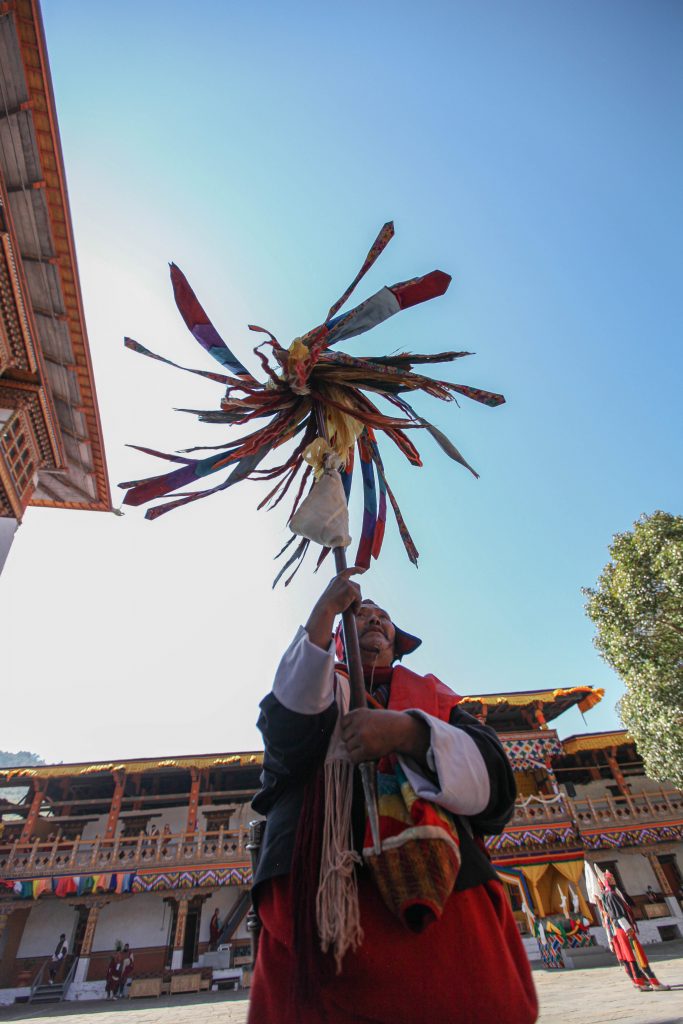
The pandemic set a somber tone to the otherwise exhilarating festival month at the Pungthang Dewachen Phodrang. Empty courtyards and deserted hallways welcomed this year’s event, the much awaited annual Punakha Domchen. “We have to follow the COVID protocols,” said Lam Neten. “Usually at this time of the year, there are so many people that there’s hardly enough room to walk freely.”
Each year, people from different regions of western Bhutan come to Punakha valley to witness the exciting Punakha Domchen. This 15-day festival with ceremonies invokes the deity Yeshey Goenpo and concluds with the annual tshechu festival of mask dances. But one of the main performances that sets Punakha Domchen apart from other tshechu is the 3-day Pazap ceremony. During this ceremony, the courtyard of Punakha Dzong is transformed into a battlefield. The setting takes you back to the 17th century, when the valley was invaded by Tibetan forces.
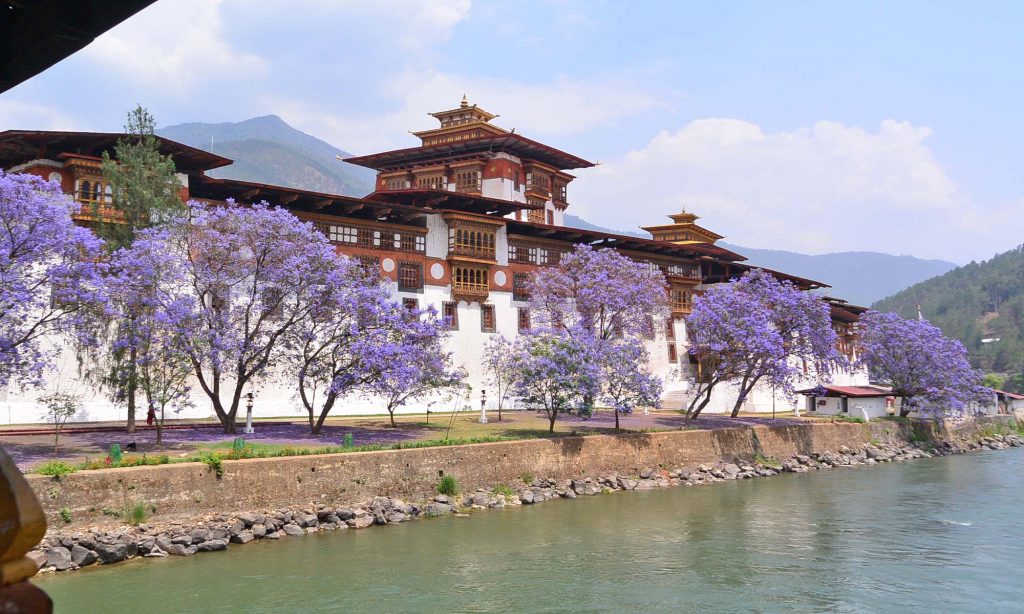
History
Punakha Domchen was first initiated in 1639 by Zhabdrung Ngawang Namgyel. This was when the valley saw the arrival of Tibetan forces. They wanted to claim the relic Ranjung Kharsapani (the self-created image of Chenrizig or Avalokiteshvara).
Zhabdrung is said to have deceived the Tibetans with clever theatrics. He convinced the invading army that he had cast off the relic into the Mo Chhu (the female of the twin rivers at whose confluence the Punakha Dzong stands) by throwing oranges into the water instead. The invaders are said to have left the valley believing that there was no cause to fight with the Bhutanese who saw no value in the treasure.
It was Zhabdrung who called on the civilians (mostly farmers at that time) to step up to protect the valley and the fortress from the invaders, thereby creating a unique army of protectors known as the Pazaps.
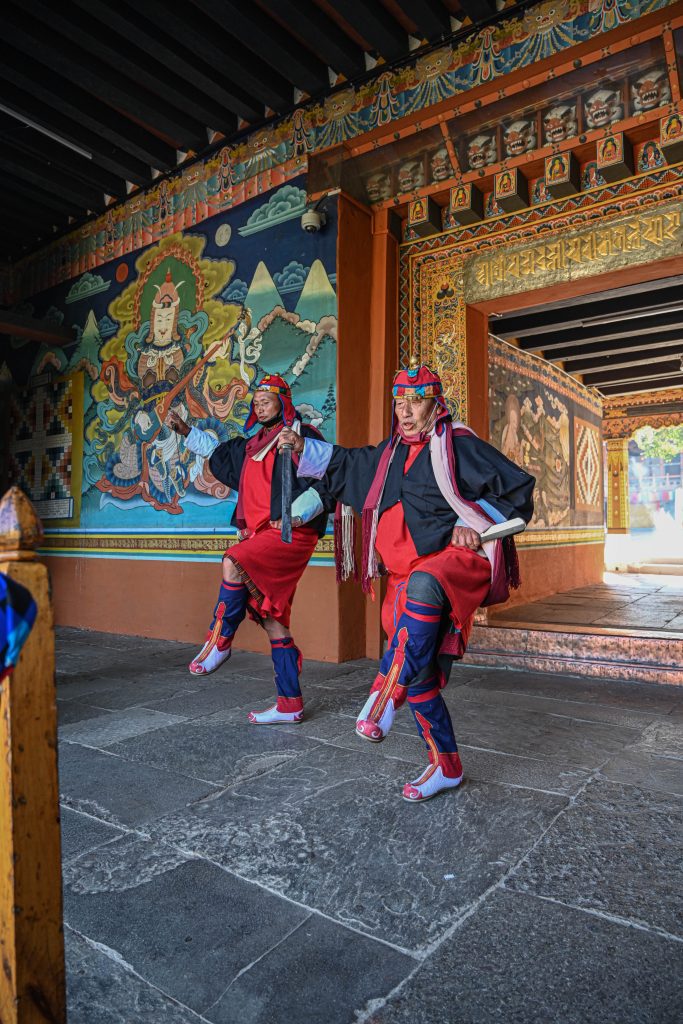
I had heard of the famous Pazap performances during Punakha Domchen. The epic battle cries. The dramatic entries on decorated horses from each clan. Loud blasts of cracker bombs that they would often throw into the crowd of spectators. But I had never really witnessed it myself. I never even thought to ask what being part of these ancient ceremonies really meant to these men. Who are these men? Where do they come from? How are they chosen to garner the title of a Pazap? It seemed quite the honour to have the title, seeing how they wore those costumes with pride. But I soon realized it wasn’t just a costume.
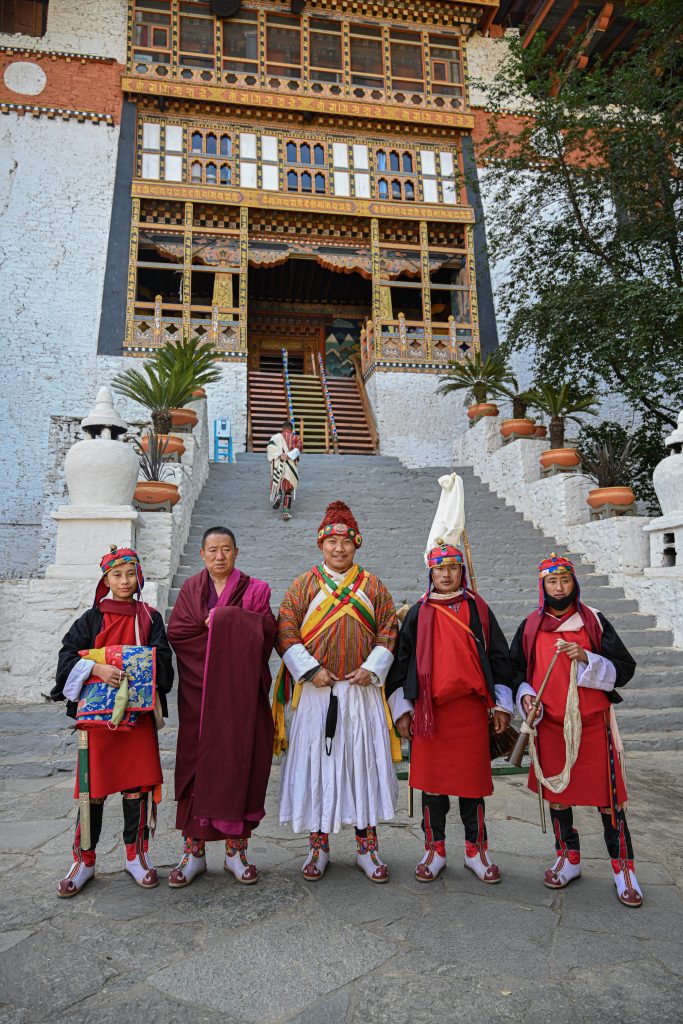
“We are not just soldiers,” said one of them. The Pazap ceremony is a celebration of our victory over the Tibetan invaders of the early 17th century. The participants are all the members of the Wang Tsho Chhen Gey, the eight prefectures of Wang under Thimphu (Kawang, Chang, and Mewang), and Punakha (Baap, Kabjisa, Shengana, Tewang, and Toeb). Lama Zhabdrung was the main patron for the regions of Sha Wang Pa Sum (present-day Wangdi, Thimphu, Punakha and Paro). Although people from all regions could join the army, the soldiers of Wang Tsho Gey were chosen because of their symbolic name. Every year, 15 Pazaps from each of these eight prefectures represent their regions. The people of this region have been following this tradition for the last 400 years.
Among a group of middle-aged-men in the parade, a young boy stood holding a flag, constantly adjusting his costume. “I’m here with my grandfather and father,” the young boy said. “I’m taking part for the first time this year.” 13 year old Tenzin Dorji was the youngest Pazap taking part in the festival this year.
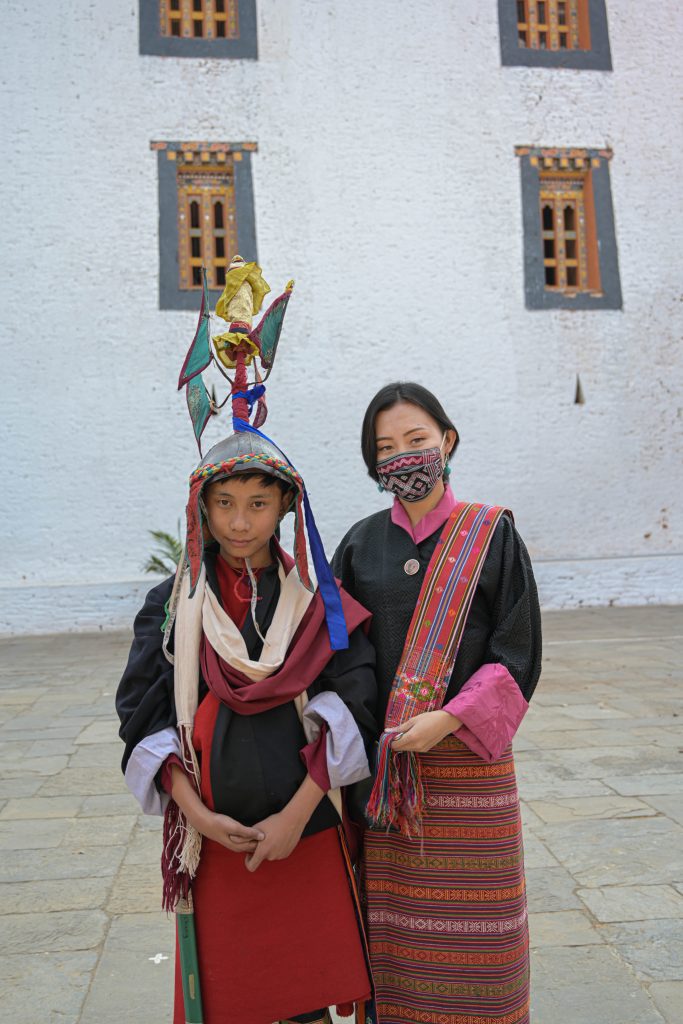
“My grandfather led his clan of Pazaps from Chang, and then my father took over after him. I also dream of being just like them one day,” he said Tenzin told me more about the ceremony and his attire. Despite his age, the young boy sounded like he had been a part of the clan a lot longer than his age would have us believe. “The Pazap way of life teaches you discipline and pride for your country. I feel like I’m serving my country whenever I put on the Pazap uniform.” He preferred talking about his experience in English to us as most of the Dzongkha terms proved difficult to remember for the young boy, something his grandfather wished he would work on.
When we heard that each clan of the eight gewogs camp around the Dzong during the Domchen, we couldn’t help but tag along with the Pazaps to one of their camps. Tenzin and his family welcomed us to theirs, and I was surprised to see that it was more than just tents pitched for a 3-day festival.

”This land belongs to our clan and the people have been setting up their camp here for ages. As the camp grounds also include many ceremonies, we decided to build a small house so that it’s comfortable and spacious for the altars of our local deities,” said Tenzin’s father, Gup Tashi Wangchuk of Chang.
Although this year’s festival saw only five from each clan, Tenzin’s grandfather said that usually there are 15 of them squeezed for space in one room. Each year the government allots a sum of Nu. 85,000 to fund each clan’s rations for the festival. “In the old days Pazaps would travel to different patrons and houses for contribution during the festival,” shared Tenzin’s grandfather.
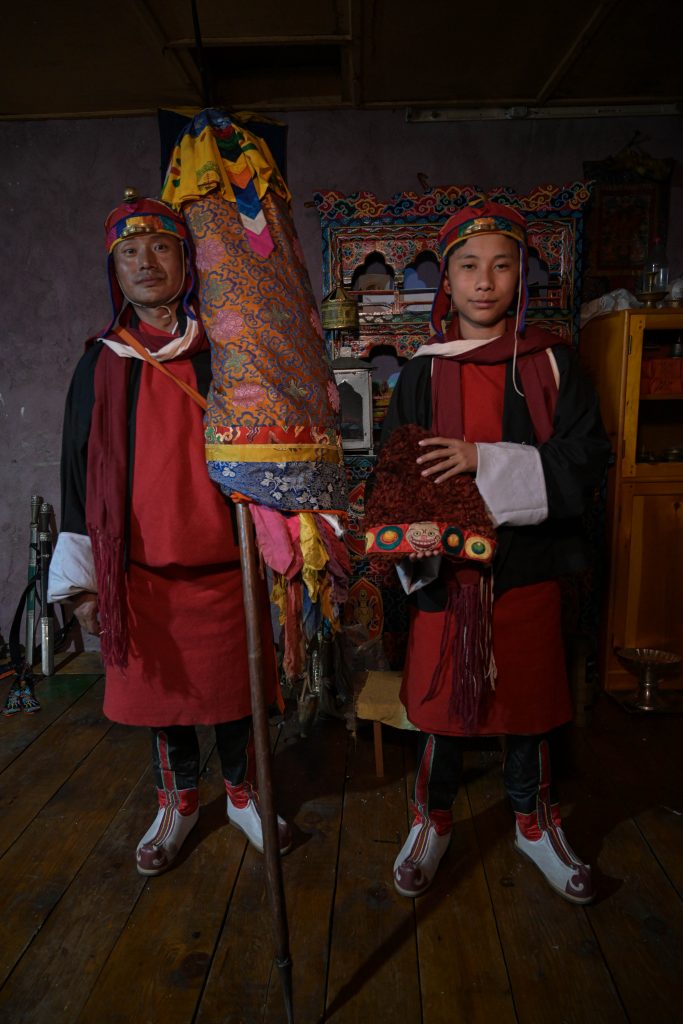
”We are very proud of this tradition. We take pride in fulfilling our duty to Zhabdrung and our protective deities each year,” said Tenzin’s father as he showed us the many sacred objects kept near the altar. One article that caught my eye was the Tsen Dhar (rolling flag). He told us that the Tsen Dhar is a sacred flag that carries the symbol of the protective deities during war. It must be kept clean at all times. “Which also means it should be kept away from women,” he added, looking away. But that’s a whole other story.
Witnessing a three-generation family of Pazaps celebrating the ancient Pazap tradition with pride and valor is nothing short of extraordinary. 13-year-old Tenzin’s awe of his father and grandfather’s legacy is inspiring. As we said goodbye to the family and thanked them for inviting us into their sacred space, we wished them well, and prayed that more of our younger generation take interest in such traditions and move them forward.